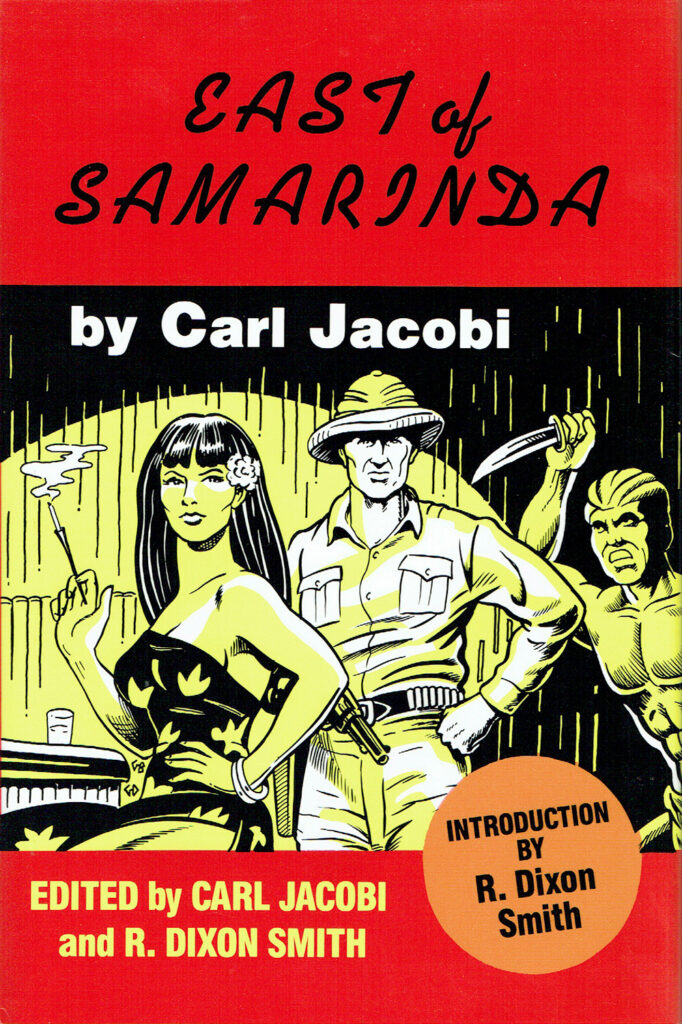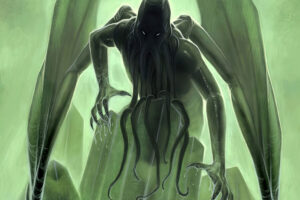 Carl Jacobi (1908-97) is best known for his stories in Weird Tales magazine in the 1920s and ’30s, though he wrote a variety of pulp stories. He was friends with Hugh B. Cave, and the two corresponded for years.
Carl Jacobi (1908-97) is best known for his stories in Weird Tales magazine in the 1920s and ’30s, though he wrote a variety of pulp stories. He was friends with Hugh B. Cave, and the two corresponded for years.
Arkham House put out three volumes of his weird fiction, but many other collections are out there. If you are interested in his weird fiction, your best option is get the two collections from Weird House Press and edited by S.T. Joshi: Mive and Others: Best Weird Stories of Carl Jacobi, Vol. 1 and Witches in the Cornfield: Best Weird Stories of Carl Jacobi, Vol. 2.
East of Samarinda, however, collects 21 of his adventure stories set in Southeast Asia and South Pacific.
When it came to pulp fiction, for every author who used their experiences traveling to exotic locations to write their stories, there were probably a dozen (or more) authors who never left their hometown, but used their imagination and research to portray the exotic sets of their stories. Jacobi was one of these, as he spent most of his life in Minnesota. But what he wrote and corresponded with people who were living in the areas he wrote about, which he vividly describes in his introduction. It’s disappointing that his original plan to including some of these letters was scrapped. But the intro illustrates the pulp writer’s process.
Like other pulp-reprint collections from the Popular Press, these are all facsimile reprints taken directly from the pulps — illustrations and all. They are taken over a 10-year period, from 1934 to 1944. The magazines include Complete Stories, Top-Notch Stories, Short Stories, Thrilling Mysteries, Thrilling Adventures, Dime Adventure, 10 Story Mystery, and even a couple of issues of both The Skipper and Doc Savage. All pit man against nature and other men.
I read a few of the stories, and all were enjoyable. The title story, “East of Samarinda,” finds a young surveyor duped into coming to Borneo for a project that doesn’t exist. But what does a jade ring with entwined snakes have to do with it all, as he’s pulled into a story of danger and intrigue? “Tiger Island,” which I was interested in after reading in the intro how the title came about, is about pearl poaching. “Submarine I-26” is set during WWII, and is about a group of Dutch POWs who take over a submarine.
While the book was published in 1989, it’s still in print, and there are copies out there for reasonable prices. And if you want to learn more about Jacobi, get the biography they put out Lost in the Rentharpian Hills: Spanning the Decades with Carl Jacobi (1985). Sadly, that one is not still in print, but it isn’t costly. If you are more interested in his weird fiction, I recommend, though I haven’t seen them, the two volumes edited by Joshi that I noted above.




I am actually halfway reading this book, and it is excellent! I only knew Jacobi through his well-known horror work, but he proves himself a master of adventure. His thorough research is superbly deployed, in sweltering jungle atmosphere and vivid details. There’s no fat whatsoever in these lean and fast-moving tales, characters deftly portrayed in a few skilled strokes. And the original pulp art included is a delight.